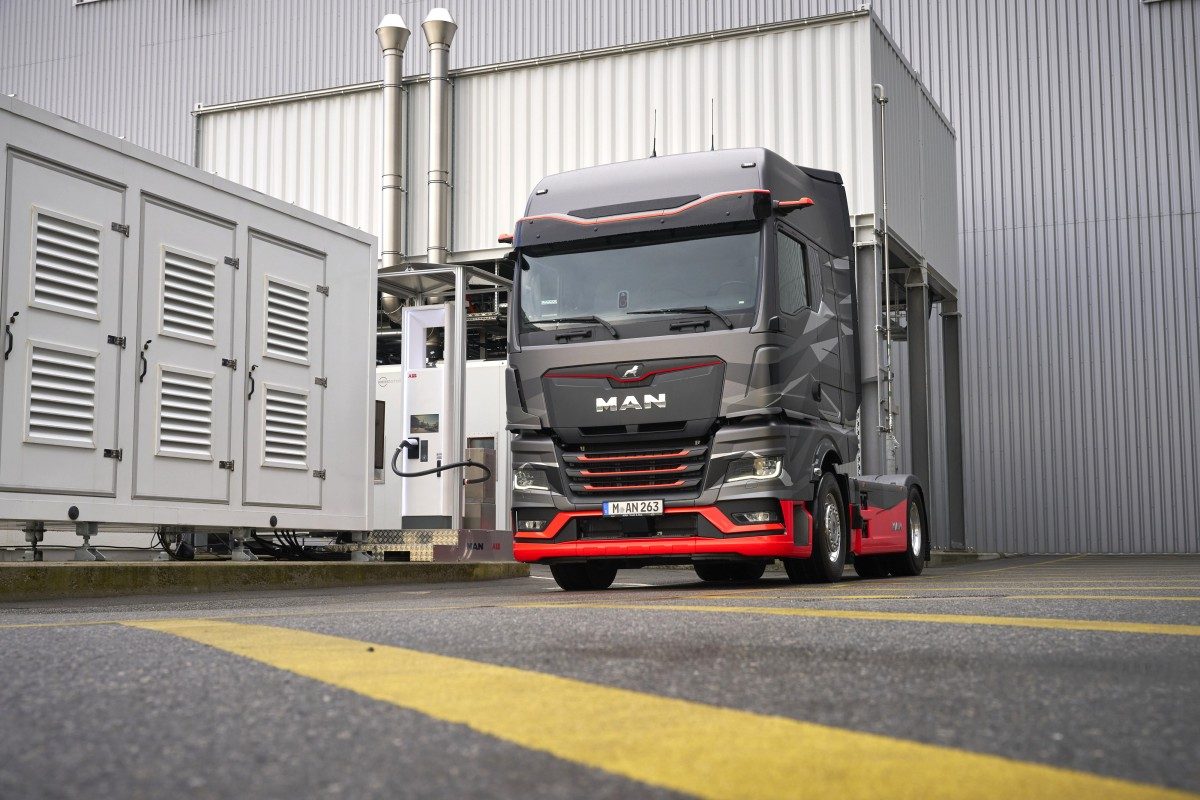Joining the International Truck of the Year jury on a tour of MAN‘s recently upgraded assembly operations in Munich was an opportunity not to be missed. It left no doubt the ‘big truck‘ battle lines for the next decade or two are being drawn.
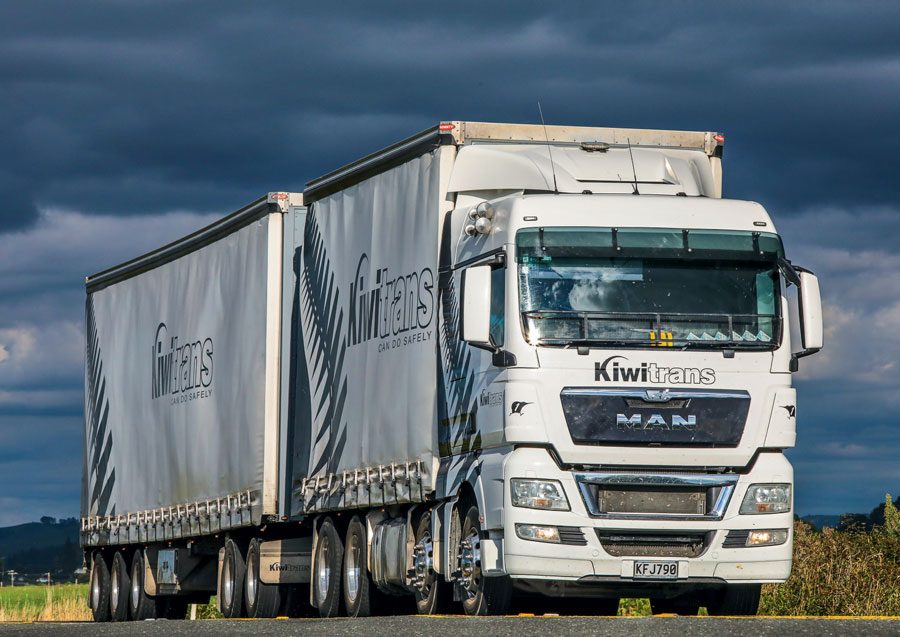
Photo: New Zealand has been a good market for MAN over the past 10 to 15 years.
If you‘re a truck enthusiast, it‘s probably the best time in history to be alive. Right at a time when the truck itself is going through its biggest metamorphosis since it was invented, the battle for global domination between the two German giants Daimler and Volkswagen is ramping up. Both have produced rock star products in their recent history and that‘s great timing because the R&D spend required to figure out what happens next in terms of propulsion and navigation has a scary number of zeros on the end. What happens next at MAN in terms of the here and now will be revealed early in the New Year with the launch of their highly anticipated NewTG truck (New Truck Generation – family naming ties there). And, harking back to the impeccable timing thing again, they‘ve nailed it. “In Q1 this year we were number one in the German market for the first time,” beamed MAN Truck & Bus CEO and Traton executive board member Joachim Drees. He said it not just with a sense of pride in place, product, and people, but also with an air of confirmation and anticipation. The result has its roots in investment, both literal and metaphorical. Yes, there‘s been significant coin spent on plant and product, but also in behavioural change via significant recalibration of culture and self-belief.
Drees told us that historically, MAN hadn‘t always been a company that trumpeted its wares from on high; rather it let the product do the talking. But now there was a different feel in the company, an energy and enthusiasm about what they build, and more to the point, what they‘re about to build. The level of investment at the Munich plant over the past five years smacks of a company with aspirations. A new €85m (NZ$138.77m) paint shop that stands 30m high, 30m wide and 150m long and can prep, electro protect, and paint 500 cabs a day. A new cab assembly line sporting 200 robots just like the ones used to ‘zap‘ the Audi cars together has also been installed, as well as new lines alongside the existing main assembly specifically for the NewTG truck. On that note there‘s also new parts racking required to house the 20,000 new bits in the NewTG. Oh, and because of its level of connectivity, MAN isn‘t referring to the NewTG as a ‘truck‘, rather an “Integrated Transport Solution”, as Drees put it in a recent press release.
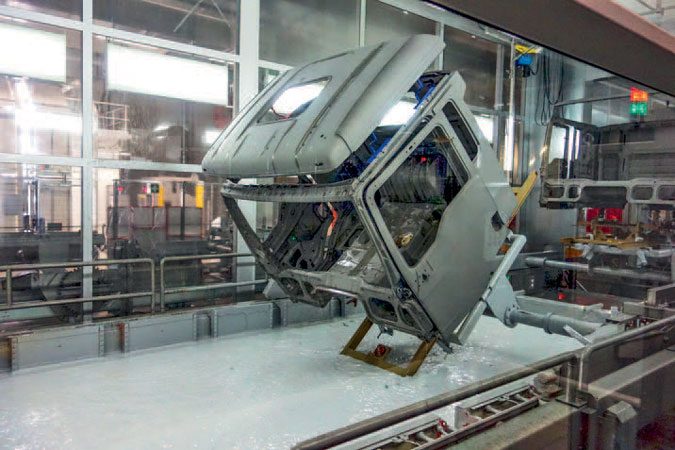 |
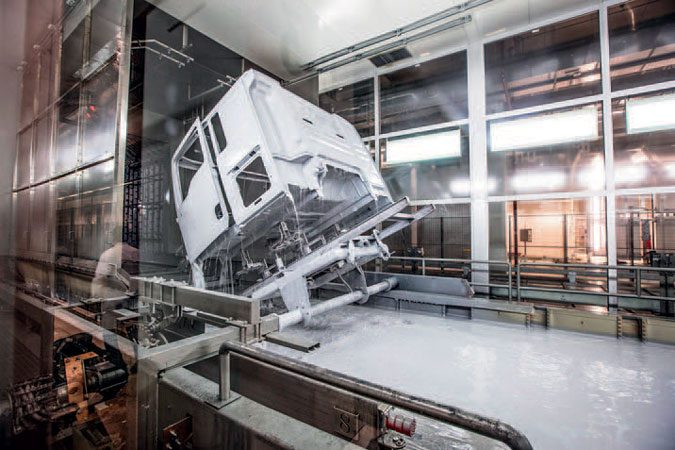 |
| Fastened to a tilting retaining device, the MAN cab is dipped into the EPD (electrophoretic deposition) bath. Excess electrocoating runs off as the cab emerges. | |
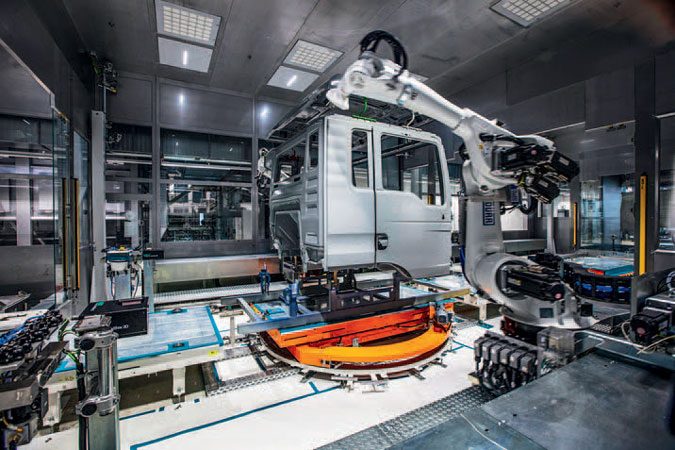 |
 |
| Robots apply a PVC compound to the edges and folds on the MAN cab to protect it from corrosion. | You can have any colour you like, as long as it‘s…any colour you like; sorry Henry, things have changed. MAN offers 2000 different options to be precise. |
‘MAN cave‘
It‘s a fair ole shed on the northern outskirts of the big biergarten (Munich‘s the home of the Oktoberfest). The MAN plant has been there since 1955 and today takes up a one million square metre footprint, a quarter of which is production dedicated. With 40,300 heavy trucks rolling off the line a year, it‘s responsible for two thirds of the company‘s build of heavy trucks, the rest coming from Krakow in Poland and Pinetown in South Africa, while the lighter TGL and TGM are built at the factory in Steyr in Austria. The main assembly line operation at Munich is typically truck, and typically German. Typically truck meaning low on robots (cabs are assembled on their own line and introduced CBU), and the reason for that is variance. With trucks there‘s a hell of a lot of options compared with knocking together the family A4 or Passat – think axles, suspensions, add-ons.
There are 2000 potential options on the chassis rail setup alone. C-3PO soon gives up the ghost if you try and get him to build the 73 variations of the TGX and TGS currently in the line-up, so like truck plants the world over, they use the most intuitive computer of all time to assemble them – us. In terms of being typically German, that‘s simply about quality, accuracy, and process. Here‘s a good example. Dr Matthias Meindl, manager of the Munich plant, said they did away with a huge parts warehousing facility 10 years ago in favour of what‘s known as the Pearl Chain production model, a form of Just In Sequence ( JIS) operation. How it works is 11 days prior to build the production sequence is set. Suppliers from all over Europe then honour their commitments, loading components into semi-trailers in production line-ready racks. The trailers turn up on site and the racks are not unloaded until they‘re ready to rendezvous with their truck on the line.
Ninety percent of the componentry arrives this way, and the serenade of semis has to be seen to be believed. With a 97% production stability rate you‘d probably put your money on the Germans, Scandinavians, or Japanese being the only ones able to pull off such a magic act on a yearin year-out basis. The plant runs two shifts, producing 100 trucks in one and 90 in the other – they can do 100 in the second stint if required. The capacity of the new paint shop would indicate the forward-looking intention you‘d have to say. Chassis run down the line in batches of five, so the team can get a groove on, creating a rhythm so to speak. Munich also assembles rear axles, and engines come from the engine plant in Nuremberg. Transmissions are sourced from either ZF or Scania – the latter now account for about 50% of production. You can easily spot the big Swede‘s shifters trundling down the line. They don‘t have ZF stamped on the side obviously, and they look different up close, but from a distance the telltale sign is the chassis mounting cross member amidships as opposed to the ZF, which snuggles up to the engine. Of course there was no sign at all of anything indicating a human may have to change gears on the trucks we saw inching along the line. MAN chassis are painted on-site as opposed to sibling Scania, which sources theirs ready painted.
As well as the cab, other subcomponent preassembling runs alongside and feeds into the mainline: things like doors, fenders, radiators and fifth wheels. Like barmaids at Oktoberfest, trolleys with these subassemblies and racks from the trailers outside turn up in the nick of time to maintain a continuous flow on the main line, and 950 metres after two rails from the press shop came together for the first time, another silver Lion roars out the door. It takes 67 workstations to make an MAN, in 4m 45sec cycles. Seventeen of those stations involve makeup (paint) and there‘s a 98% first start, no-issues KPI. Currently 10 trucks a week come down the line with black and white mottled cabs that look like they‘ve been painted by an angry child. No prizes for guessing what‘s going on there, it‘s NewTGs slotted in for practice, sorting out the final assembly line process tweaks, and identifying any components that may have intentions of being naughty on ‘go‘ day.

Photo: Robot after robot is lined up along the production line for MAN cabs. Almost 200 robots will be used in the newly built body shop.
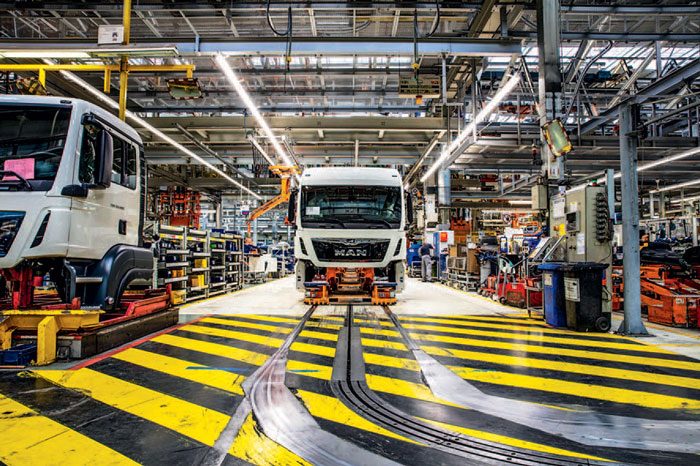
Photo: MAN cabs are transported through the production process on automated towline conveyor carts.
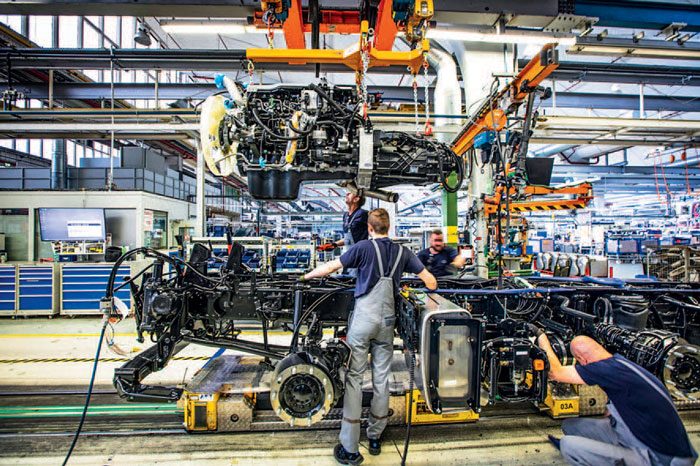
Photo: The engine and gearbox meet the chassis.
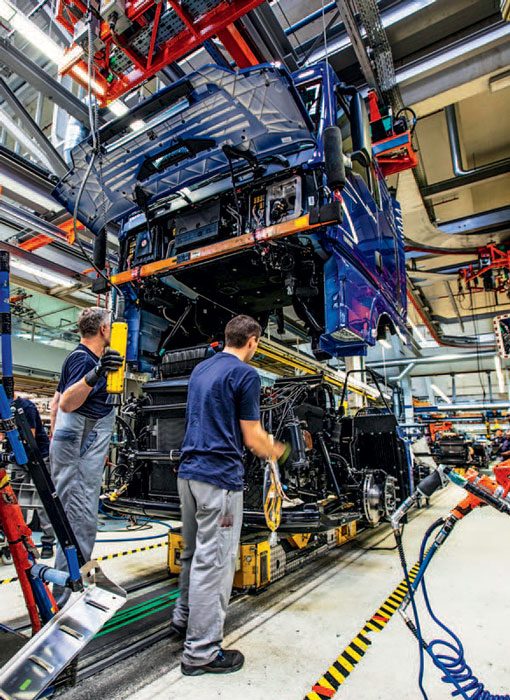
Photo: A marriage on the production line. The fully equipped MAN cab is attached to the chassis.
Making great fabulous
In the relentless search for perfection and with the new truck on the horizon, the plant has taken some process cues from their car colleagues, particularly in pre-assembly functions, things like interior and door prep. It‘s also ramped up quality control significantly in the past five years. The day starts with pre kick-off meetings where goals and aspirations for the shift are decided, and there are quality checks at strategic points in the line. One Lion a day is randomly selected and taken out into the world and given a good old thrashing on the road, then subjected to every test imaginable on return – seal, integrity, fit, finish, you name it. And not surprisingly it‘s all paid off. Since 2014 there‘s been a 21% reduction in issues with sourced parts, a 21% reduction in production issues, and not surprisingly taking the previous two into consideration, a 56% reduction in customer issues. One of the interesting things you notice walking around is the simplicity of the communication and clarity of assembly information delivered to assemblers. One of the reasons for this is that everyone in the factory is qualified in some way. It‘s also apparent in the issue resolution procedure. To the observer there‘s no exhausting process flow charts with endless Yes/No loops; the one we looked at simply said:
• Identify – Audit
• Visualisation – Cluster focus
• Systemic – Cause Analysis (CA)
• Present CA – Decide action.
How German is that? We saw a ‘cluster focus‘ in action as a few clever people stood around and discussed a recalcitrant wiring loom from a NewTG. There‘s nothing complex about German automotive issue resolution. Start with an issue, insert some bright people – resolve. The German approach to health and safety seemed refreshing also. It doesn‘t appear to be based around accommodating the lowest common denominator. There was one area of cab assembly where we were required to put toe-protecting cups on our shoes, and yes, maybe they knew we were an assembly plant-savvy group, but there was an assumed maturity on their part in regard to us. We undertook outrageous acts like crossing active assembly lines – achieved by looking to make sure there was nothing within cooee and stepping through.
Lo and behold, everyone who exited the bus at the start got back on at the end. Interestingly, there didn‘t appear to be a productivity issue in Munich. It‘s worth noting that we encountered much the same approach in the Freightliner assembly plant in North Carolina in July. Every time we come to one of these places we realise just how far under the skin trucks get, even today‘s cyber-souled servants of carriage. Will they lose their soul completely when coils replace combustion? To some degree you‘d have to think so. There‘s something about that moment at the end of an assembly process when pistons are thrust into life for the first time, and a truck that was merely a mannequin five minutes ago suddenly drives off in search of its first load to satisfy a society that is sadly no longer satisfied with it.



